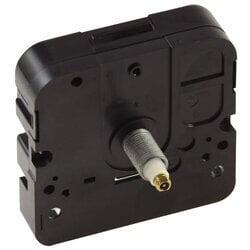Optimizing Performance of Clock Motors

Clock electric motors regulate the timekeeping and other useful habits of watches. In today's globe, clock motors (or "activities" in the trade) are online powered, and a quartz crystal is the timing resource, vibrating at a high frequency and releasing a train of pulses, their matter proportional to the amount of elapsed time. Therefore, we have a modern means of keeping time, tantamount in look from the older mechanical clocks; nonetheless, the contemporary high torque movement runs mostly in software, enabling extra functions, some unique and unusual, to be executed relatively conveniently, especially when contrasted to their mechanical relatives.
Conventional clock motors were mechanically made and developed, the only feasible approach of yore. A coiled springtime or hanging weight supplied possible power, which consequently was converted into kinetic energy by causing a flywheel to revolve. Pendulums and escapements regulated the frequency of turning, causing a stable tick-tock at an accurately fine-tuned pace of one second.
Yet the mechanical structures had troublesome and bulky components, which limited their abilities and made it hard to adapt them to extended or cutting-edge designs. Thus, once it was found that by subjecting a quartz crystal to a voltage drop creates it to resonate and produce pulses at an accurate rate, the tables were established for switching from a mechanical approach to a digital one for maintaining time. The accessibility of digital memory additionally promoted the transition to an extra digital operation.
Craftsmens of the past produced timepieces that exhibited striking impacts, but the effort was elaborate, painstaking, and involved ingenious mechanical couplings to obtain the effects to be in sync with temporal occasions. And, thus initiative became much less and less cost-effective, it declined eventually into a lost art. Nevertheless, the modern-day programmable clock electric motor makes it easy to simulate these historic impacts and also to achieve higher ones.
Naturally, electronic clocks (which are electronic) present a different user interface and stretch the normal period (when everything resets) by tracking the moon stage, the weekday, and the full day. But something is lost in this all-digital interface, and the motors we explain right here are essentially analog (relocating hands, standard dial, etc), though with some solid-state wiring. And yet they can reproduce the treasure timepieces.
The quartz crystal pulse-train is so precise that timing is near specific, and basic subdivision brings the pace to the realm of secs and mins. In addition, it is straightforward to expand the length of the reset duration by growing its trigger moment. Put extra info on the dial and include one more hand to point at that info, and the days of the week or the dates of the month are shown along with normal time.
It is likewise as uncomplicated for the wrist watch to show the existing level of the trend. This is additionally a routine sensation, but based on the lunar cycle of 24 hr and 50 minutes. You can locate clock motors that do this function, either as a standalone piece or integrated with standard timekeeping.
Yet you can also obtain motions that track adjustments in the weather condition (barometric pressure, moisture, or temperature). These adjustments are not routine, so the crystal is not the resource of the information displayed; rather, sensing units take normal dimensions, and their values are converted into a loved one position along a scale. The conventional dial and hands are changed with a single hand that turns backward and forward over the range printed in an arc along the area.
There are still more features that we can discuss, such as continual sweep pre-owneds, chimes, various aesthetic pendulums, and high-torque variations that let one build frameworks three feet throughout in diameter. Yet our room is used up. The reader ought to now have the basics and the understanding for maximizing the performance of clock electric motors.